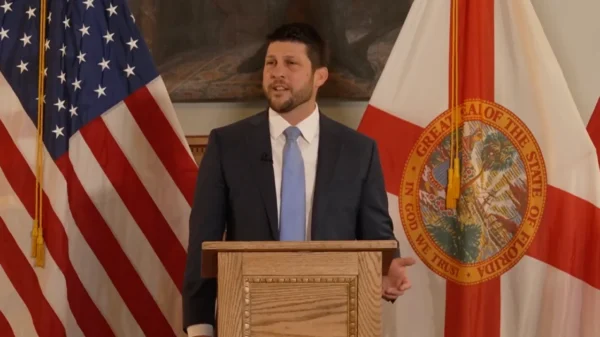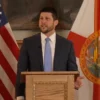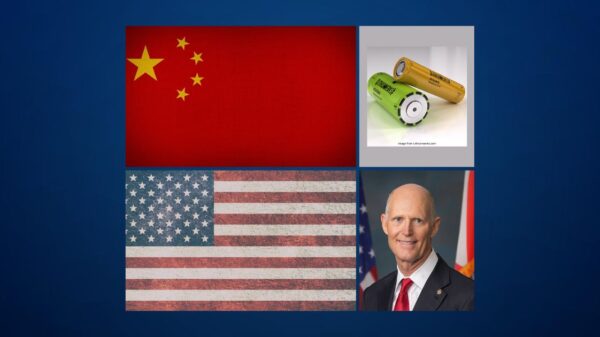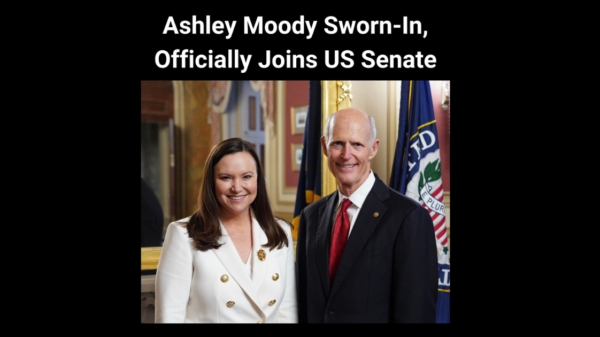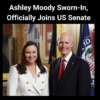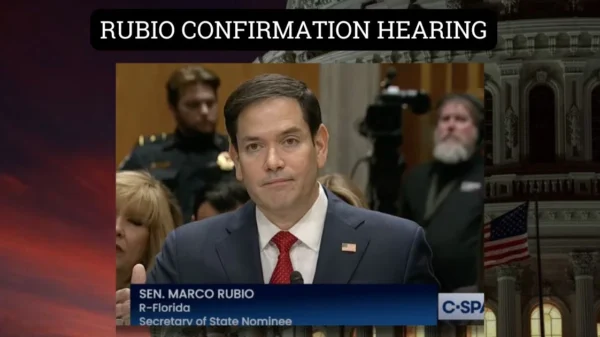Last week, U.S. Sen. Marco Rubio, R-Fla., the chairman of the U.S. Senate Small Business and Entrepreneurship Committee, and U.S. Sen. Ben Cardin, D-Mary., the ranking member of the committee, sent a letter to U.S. Treasury Sec. Steven Mnuchin and U.S. Small Business Administration (SBA) Administrator Jovita Carranza urging the agencies to provide additional data and reporting on the Paycheck Protection Program (PPP), Economic Injury Disaster Loan program (EIDL), and Small Business Debt Relief programs as enacted and expanded by the CARES Act.
The full text of the letter is below.
Dear Secretary Mnuchin and Administrator Carranza:
As Chairman and Ranking Member of the U.S. Senate Committee on Small Business and Entrepreneurship, and as two of the principal authors of the small business provisions in the CARES Act, we are writing to express our views on a number of implementation and oversight concerns with the Paycheck Protection Program (PPP) and Economic Injury Disaster Loan (EIDL) and Emergency Grant programs. The COVID-19 pandemic has had a devastating impact on small businesses across our nation due to no fault of their own. In response, Congress has appropriated nearly $730 billion to support impacted small businesses through the Small Business Administration’s (SBA) PPP, Debt Relief and EIDL programs, and provided the SBA with more than $2.7 billion for the implementation and oversight of these programs. This historic financial relief has provided a lifeline for small business owners and saved approximately 50 million jobs from impending layoffs.
We appreciate the tireless work of the dedicated staff at the SBA and the Department of the Treasury to quickly set up the PPP, an entirely new program created in the CARES Act, built on the 7(a) program platform and deployed by existing and new lending partners. Small businesses will continue to face unprecedented challenges in the weeks and months to come, and we are committed to working with the agencies to deliver vital assistance to support the recovery of our nation’s small businesses and their workers.
Additional Data and Reporting
Given the grave nature of this crisis and the unprecedented level of funding that has been appropriated, it is critical that the public and Congress have timely and complete information about where these funds are going, and the committee expects an increased level of transparency and accountability from the SBA.
We appreciate the SBA’s increased efforts to provide our offices with information on both the PPP and EIDL programs. For the second round of PPP funding, since April 28, 2020, the agency has on most days provided us with the number and volume of loans. Since May 8 SBA has also provided the average loan size and number of lenders. SBA has provided three weekly reports with gross loan dollars, number of approved loans, number of approved dollars, number of lenders, a breakdown of loan size, lending institution size, state-by-state and territory data, as well the top 15 lenders. Since May 11, 2020, SBA has provided two reports that include Community Financial Institutions (CDFIs), minority depository institutions (MDIs), and both bank and nonbank lenders with under $1 billion in assets, including loan count and gross dollars.
The Agency has also provided some offices with information on EIDL and the emergency grants, including the number of loans and advances disbursed and the amount of loans and advances approved (including dollar amounts) by state. While this data has been helpful, most of this information is not accessible to the public on SBA’s website, and the sporadic nature of this information and lack of detail is insufficient for adequate Congressional oversight.
We write to request you make publicly available the following data:
Paycheck Protection Program Data:
Daily:
Number of approved loans
Volume of approved loans
Number of lenders
Weekly:
Amount of funding remaining
Number and dollar amount of approved loans
Applicant type breakdown, as reported on the application (loans approved, lender type)
Lender breakdown (loans approved, lender type)
State-by-state (and territories/D.C.) breakdown
Loan size breakdown
Industry breakdown
Demographic breakdown (loan number and loan volume)
Monthly:
Number and dollar amount of loans disbursed
Number and dollar amount of cancelled loans
Number and dollar amount of loans fully forgiven
Number and dollar amount of loans not fully forgiven and become term loans
Amount of disbursed lender compensation fees
Demographic breakdown (loans approved, state, Congressional District, applicant type, lender type)
NAICs two digit code breakdown for loans of $100,000 and more (loans approved, loans disbursed, state, applicant type, lender type)
Congressional District breakdown
EIDL Advance and Loan Data:
Weekly:
Number and volume of approved loans and grants, reported separately
Number and volume of disbursed loans and grants, reported separately
Amount of EIDL funding remaining
Amount of grant funding remaining
Bi-Weekly (every two weeks):
Total number of grants approved and disbursed, separately and including a breakdown by demographics
State-by-state (and territories/D.C.) grant volume
State-by-state (and territories/D.C.) grant dollars
Total number of loans approved and disbursed
Total number of loans by dollar amount
State-by-state (and territories) loan volume
State-by-state (and territories) loan dollars
Number of staff dedicated to processing and dispersing loans (including from other agencies and reservists)
Debt Relief Program Data:
Monthly:
Amount of remaining funds appropriated for payment of new and existing 7(a), 504, and microloans
Total number and dollar amount of approved dollars and disbursed dollars for borrowers receiving assistance, broken down by 7(a), 504, and microloans
Additional Information:
In adherence to the SBA’s current disclosure practices of “frequently requested information,” the SBA should begin making available on its website the following PPP information for all loans approved since the program began:
Name of business or nonprofit borrower and address, lender and address, loan or grant amount, business type, Congressional District, number of jobs supported
To the extent practicable, we would appreciate the SBA working to provide Congress with the following data:
Congressional District (CD) breakdown for EIDL loans and grants
Jobs supported by the PPP and Debt Relief Program
This information will ensure that Congress can carry out its duty to conduct robust, necessary oversight of the PPP, Debt Relief and EIDL programs, and have a more complete understanding of how these programs are impacting small businesses. To that end, by June 10, 2020 when you testify before the Committee, please provide the committee with a plan outlining the process by which SBA will provide us and the public with these ongoing updates. Additionally, by June 10, 2020, SBA should post on its website all the data and reports it has so far provided to the Congress on these programs.
Underserved and Rural Markets
In addition to data and relevant metrics, we are also deeply concerned about the ability of small businesses in underserved and rural markets, including veterans, to access the lifeline of paycheck loans. Congress intended for the PPP to be inclusive and included lender incentives and a “Sense of the Senate” in the CARES Act, which suggested consideration be given to the priority processing and disbursement of PPP loans to underserved borrowers. A recent report by SBA’s Office of Inspector General (OIG) noted that SBA has not issued guidance and established a policy of “first-come, first-served.” Further, in streamlining the application for PPP, the SBA did not include voluntary demographic information as they typically do on the 7(a) loan application. Consequently, the Office of Inspector General (OIG) reported that, “borrowers in underserved and rural markets…may not have received the loans as intended and because SBA did not request the demographic information, “it is unlikely that SBA will be able to determine the loan volume to the intended prioritized markets.” The OIG suggested the following actions: 1) issue guidance to lenders prioritizing borrowers in underserved markets and revise the borrower application to collect demographic data going forward; and 2) collect demographic data on the forgiveness application for loans already disbursed. We appreciate the inclusion of the voluntary collection of demographic data on the forgiveness form released on May 16, 2020. We ask that the SBA publish this data weekly.
Set Aside for CDFIs and MDIs
To facilitate lending in underserved and rural markets, Congress intended for small businesses to be able to access the PPP through the lender of their choice, whether they are banked or unbanked. This may mean accessing the program through a community bank or nonbank lender, and oftentimes in underserved areas, it means working with Community Development Financial Institutions (CDFIs) and minority depository institutions (MDIs). Congress set aside $60 billion for smaller and mission lenders in the second round of PPP funding to broaden options for underserved borrowers, and we have introduced legislation requiring and sent letters urging the SBA and Treasury to set aside an additional $10 billion for institutions like CDFIs and MDIs to serve borrowers in underserved communities. Consequently, we welcomed the Treasury Department’s announcement last week that it will reserve $10 billion in PPP funding for CDFI lending. It was a welcome step in the right direction. To build on that important change, we request that you consider further revising the eligibility threshold for CDFIs and other community lenders in order to become eligible lenders in the PPP. This is particularly important for CDFIs that operate in rural markets and Native CDFIs, for which lending on a larger scale is not reasonable or feasible.
Thank you for your attention to this important matter.





